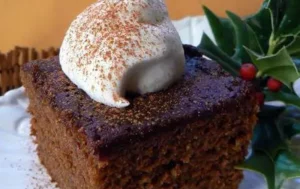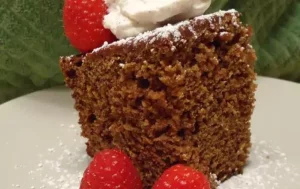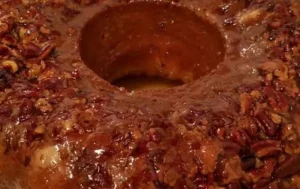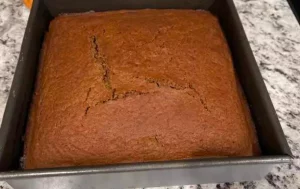Gingerbread, with its rich history and cultural significance, has been delighting taste buds for centuries. Originating from Europe, gingerbread has evolved from a simple mixture of ginger and breadcrumbs to a diverse range of sweets enjoyed worldwide. Initially, gingerbread was a favorite at medieval fairs in England, France, and Germany, where it was shaped into various figures and painted with gold leaf. Not just a treat, gingerbread held a place in superstitions and traditions, often used as a token of love or a symbol of good luck. Moreover, it was believed to have health benefits and was prescribed by physicians to cure specific ailments. Today, gingerbread is synonymous with holiday celebrations, especially Christmas, where it plays a central role in festive decorations and family activities, capturing the essence of warmth, spice, and joy associated with the season.
Types of Gingerbread
Gingerbread manifests in two primary forms: the soft, cake-like version and the crisp, cookie style.
The traditional gingerbread cake, moist and rich, is a favorite in many households, especially during the holidays. In contrast, gingerbread cookies, known for their firm texture, are popular for their versatility in shapes and decorations, especially in the form of gingerbread men and houses. Furthermore, gingerbread’s regional varieties add to its global appeal.
For instance, in northern England, Parkin stands out with its unique blend of oatmeal and treacle. France’s Pain d’épices offers a drier texture, using honey instead of treacle, with a subtler spice blend.
The Netherlands and Belgium are known for their peperkoek, a soft, crumbly gingerbread often enjoyed at breakfast.
Germany contributes with its two distinctive forms: the soft Lebkuchen, often found in Christmas markets, and a harder version used in festive shapes and decorations. Each variety of gingerbread carries the essence of its region, offering a delightful journey through tastes and traditions.
For those who enjoy the process of baking and decorating, the article on slutty brownies offers a playful take on combining different dessert elements, something that can inspire gingerbread decorations.
Gingerbread Ingredients and Flavors
Gingerbread’s delightful taste arises from its classic ingredients: ginger, molasses, and a variety of spices. These core components are the heart of gingerbread’s rich and warming flavor. Ginger, with its pungent and spicy zest, brings a distinct freshness to the mix. Molasses adds depth with its sweet, yet slightly bitter, undertones. Spices like cinnamon, nutmeg, and cloves interweave to create a complex aroma that is both inviting and comforting. Additionally, each recipe may include variations like orange zest or anise for a unique twist. This blend of ingredients allows gingerbread to strike a balance between sweet and spicy, making it a versatile base for creative culinary experiments. From soft, moist cakes to crunchy cookies, gingerbread adapts to various textures while maintaining its characteristic flavor profile. This flexibility in ingredients and flavors makes gingerbread a beloved treat across different cultures and culinary traditions.
Gingerbread in Different Cultures
Gingerbread’s journey across cultures illustrates its adaptability and significance. In Germany, lebkuchen, a softer form of gingerbread, is a Christmas staple deeply rooted in holiday traditions. Its variety of shapes, sizes, and flavors, ranging from honey-sweetened to chocolate-coated, reflects Germany’s rich baking heritage. Lebkuchen often includes nuts and candied fruit, symbolizing festivity and abundance.
Moving to the Netherlands and Belgium, Peperkoek offers a unique experience. This softer, crumbly gingerbread, typically enjoyed at breakfast or as a snack, often features a thick slice with a buttery topping. Its milder spice blend and the inclusion of rye flour make it a distinct variant in the gingerbread family.
Ashkenazi Jewish cuisine presents the honey cake, akin to gingerbread in its use of spices and sweeteners. Traditionally consumed during Rosh Hashanah, the Jewish New Year, this cake symbolizes hope for a sweet year ahead. The honey cake’s spice blend, often including ginger, cinnamon, and cloves, links it closely to gingerbread, showcasing the versatility and cultural integration of this beloved treat.
Each culture embraces gingerbread in its own unique way, yet the underlying themes of warmth, spice, and sweetness remain universal, making gingerbread a cherished culinary tradition worldwide.
The Art of Making Gingerbread
Mastering gingerbread begins with understanding the basic steps of baking this festive treat. First, you combine the dry ingredients: flour, baking soda, and spices. This mixture sets the foundation for the gingerbread’s signature flavor. Next, you cream together butter and sugar, adding richness and sweetness. Then, incorporate eggs and molasses, which bring moisture and depth to the batter. Carefully blend the wet and dry ingredients to create a smooth, homogenous dough.
When transitioning to tips for perfect texture and flavor, it’s crucial to balance the spices. Ginger, cinnamon, and cloves should harmonize without overpowering each other. For a moister gingerbread, molasses is key; it not only adds a distinct flavor but also ensures the gingerbread remains soft and chewy. When rolling out cookie dough, thickness matters. Thicker dough results in softer cookies, while thinner dough yields crispier ones. Additionally, chilling the dough before rolling and cutting helps maintain the cookies’ shape during baking. Lastly, oven temperature and baking time are pivotal. Overbaking can lead to dry gingerbread, so monitoring the oven closely is essential. These tips, coupled with a little practice, will lead to delicious and beautifully textured gingerbread, perfect for any holiday gathering.
Gingerbread in Holiday Traditions
Gingerbread plays a pivotal role in holiday traditions, particularly during Christmas. The tradition of making gingerbread houses, a practice popularized in 19th-century Germany, has become a beloved holiday activity worldwide. These edible structures, adorned with a variety of candies and icing, are not just treats but also a medium for creative expression. They often serve as centerpieces for holiday gatherings, symbolizing the warmth and joy of the season. Similarly, gingerbread men, with their iconic shape and decoration, are a staple of Christmas baking. These festive cookies are often decorated with icing and candies, bringing fun and whimsy to holiday tables.
Additionally, gingerbread holds a special place in Oktoberfest celebrations. In this German festival, large gingerbread hearts inscribed with affectionate phrases are common. These hearts, often adorned with colorful icing and worn around the neck, are tokens of love and friendship. This tradition adds a sweet, romantic touch to the lively Oktoberfest festivities. In both Christmas and Oktoberfest, gingerbread transcends its role as a mere food item, becoming a symbol of celebration, affection, and cultural heritage.
For those curious about the specific ingredients that go into such treats, a look at what are the ingredients in brownie mix can provide insights into the commonalities and differences in baking ingredients.
Creative Gingerbread Recipes
Gingerbread
- Preheat Oven: Set your oven to 350°F (175°C).
- Dry Ingredients: In a bowl, whisk together the flour, baking soda, ginger, cinnamon, cloves, and salt.
- Wet Ingredients: In a separate bowl, cream the butter and brown sugar until light and fluffy. Beat in the egg and molasses.
- Combine: Gradually blend the dry ingredients into the wet mixture.
- Author: admin
- Prep Time: About 20-30 minutes.
- Cook Time: 8-15 minutes, depending on what you’re making.
- Total Time: Approximately 50 minutes to 1 hour, including cooling and decorating.
Ingredients
2 1/2 cups all-purpose flour
• 2 teaspoons ground ginger
• 1 1/2 teaspoons ground cinnamon
• 1/2 teaspoon ground cloves
• 1/2 teaspoon ground nutmeg
• 1/2 teaspoon baking soda
• 1/2 teaspoon salt
• 1/2 cup unsalted butter, softened
• 1/2 cup granulated sugar
• 1/2 cup brown sugar, packed
• 2 large eggs
• 1 cup molasses
• 1 cup hot water
• 1 teaspoon pure vanilla extract
Instructions
Preheat the Oven:
• Preheat your oven to 350°F (175°C). Grease and flour a 9×9-inch baking pan or line it with parchment paper.
Sift Dry Ingredients:
• In a medium-sized mixing bowl, sift together the all-purpose flour, ground ginger, ground cinnamon, ground cloves, ground nutmeg, baking soda, and salt. Set this dry mixture aside.
Cream the Butter and Sugars:
• In a separate large mixing bowl, cream together the softened butter, granulated sugar, and brown sugar until the mixture is light and fluffy.
Add Eggs and Molasses:
• Beat in the eggs, one at a time, and then mix in the molasses until well combined.
Combine Wet and Dry Ingredients:
• Gradually add the dry ingredient mixture to the wet ingredients, mixing until just combined.
Add Hot Water and Vanilla:
• Pour in the hot water and add the vanilla extract, then stir until the batter is smooth.
Bake:
• Pour the gingerbread batter into the prepared baking pan.
Bake in the preheated oven for approximately 40-45 minutes, or until a toothpick inserted into the center comes out clean.
Cool:
• Allow the gingerbread to cool in the pan for about 10 minutes before transferring it to a wire rack to cool completely.
Slice and Serve:
• Once cooled, slice your gingerbread into squares or rectangles and serve. You can dust the top with powdered sugar or serve it with a dollop of whipped cream or a scoop of vanilla ice cream if you like.
Notes
Shaping:
- For Cookies: Roll out the dough on a floured surface to about 1/4-inch thickness. Cut into shapes with cookie cutters.
- For Gingerbread House: Roll the dough to about 1/4-inch thickness and cut out pieces based on your gingerbread house template.
Baking:
- Cookies: Bake for 8-10 minutes, or until the edges are just starting to brown.
- Gingerbread House Pieces: Bake for 12-15 minutes, or until firm and edges are golden brown.
Cooling:
- Let the gingerbread cool on the baking sheet for a few minutes before transferring to a wire rack to cool completely.
Decorate:
- Decorate with royal icing, candies, and other edible decorations as desired.
Gingerbread’s versatility allows for an array of creative recipes that go beyond the traditional cookie or cake. For instance, Gingerbread Coffee Cake transforms the classic gingerbread flavors into a moist, spiced cake, perfect for holiday brunches. It combines the rich taste of gingerbread with the comforting texture of coffee cake, making it an ideal accompaniment to a warm cup of coffee or tea.
Gingerbread pancakes offer a festive twist on a breakfast favorite. Infusing pancake batter with gingerbread spices and molasses creates a delightful morning treat, bringing the essence of the holidays to the breakfast table. These pancakes can be topped with whipped cream, syrup, or even a sprinkle of powdered sugar for extra sweetness.
Another innovative creation is Gingerbread Meringue Bars. This dessert layers gingerbread with a light, airy meringue, offering a contrast of textures and flavors. The spiciness of it pairs beautifully with the sweet, fluffy meringue, creating a sophisticated and visually appealing dessert.
Adapting traditional gingerbread recipes for modern tastes involves experimenting with ingredients and presentation. Incorporating elements like coffee, chocolate, or fruit into its recipes can add new dimensions of flavor. Similarly, reimagining it in forms like cupcakes, truffles, or even savory dishes opens up endless possibilities for this holiday favorite. These creative adaptations keep the spirit of it alive, allowing it to continually evolve and delight new generations.
Decorating and Serving Ideas
Decorating its cookies and houses is a creative and enjoyable part of the holiday season. Begin by preparing a sturdy icing, often a royal icing, as it hardens well and holds decorations in place. Use a piping bag for precision when outlining and filling in areas. For a playful touch, employ a variety of colors and edible decorations like sprinkles, candies, and chocolate chips. Experimenting with different icing tips can create textures and patterns, adding depth and character to your gingerbread creations.
When it comes to serving it, the pairing possibilities enhance its flavor. Its cookies, for instance, pair beautifully with warm beverages like hot cocoa or spiced tea, creating a cozy and comforting snack. For its cake, try serving it with a dollop of whipped cream or a side of vanilla ice cream to balance the spices. Additionally, incorporating fresh fruits like apples or pears can complement the rich flavors of it. These serving ideas not only enhance the taste experience but also make it a versatile dessert suitable for various occasions.
Health and Nutrition Aspects
Gingerbread, while a delightful treat, typically contains sugar, butter, and flour, which contribute to its calorie count. A standard piece of it cake can have around 200–300 calories, with varying amounts of fat and sugar depending on the recipe. However, it also offers some nutritional benefits, primarily from spices like ginger, which is known for its anti-inflammatory properties.
For a healthier version, consider substituting ingredients. Whole wheat flour can replace all-purpose flour for added fiber, while applesauce or mashed bananas can be used as a partial substitute for butter, reducing fat content. Sweeteners like honey or maple syrup can replace sugar, providing a more natural sweetness. Additionally, using blackstrap molasses increases the iron and calcium content. These healthier substitutes not only improve the nutritional profile of gingerbread but also offer new flavors and textures, making it a treat you can enjoy with less guilt.
For those who enjoy the process of baking and decorating, the article on slutty brownies offers a playful take on combining different dessert elements, something that can inspire gingerbread decorations.
FAQs
Q: What is the origin of gingerbread?
It’s origins trace back to Europe, with historical references dating as far back as ancient Greece and Egypt. It gained popularity in medieval Europe, especially in Germany, where it became a traditional Christmas treat.
Q: Can gingerbread dough be made in advance?
A: Yes, you can prepare it dough ahead of time. It can be refrigerated for a few days or even frozen for longer storage. Thawing overnight in the refrigerator is recommended before use.
Q: Why does my gingerbread come out dry or hard?
A: Overbaking is a common cause of dry or hard gingerbread. To prevent this, bake it until it’s just firm and follow the recipe’s recommended baking time closely. Keeping an eye on the oven temperature is also crucial.
Q: Are there vegan or gluten-free gingerbread options?
A: Yes, it can be adapted for vegan or gluten-free diets. Use plant-based substitutes for butter and eggs, and gluten-free flour blends can replace regular flour.
Q: What are the best spices for gingerbread?
A: The classic spice mix for it includes ginger, cinnamon, cloves, and nutmeg. You can adjust the quantities to suit your taste preferences.
Q: How long does gingerbread last?
Gingerbread cookies typically last up to two weeks in an airtight container at room temperature. Its cake can be stored for about a week under similar conditions.
Q: Why is it called gingerbread?
Gingerbread” gets its name primarily from one of its distinctive ingredients: ginger. The term has been used since the 15th century. The addition of ginger gives the sweet treat its characteristic flavor and aroma.
Q: Is gingerbread a biscuit?
A: Whether it is considered a biscuit can vary depending on the region and the specific recipe. In British English, “biscuit” is a term used for what Americans call a “cookie,” and in this context, it is often considered a type of biscuit. However, it can also refer to a soft, cake-like bread or even a dense, bread-like dessert, especially in American English.
Q: What does gingerbread taste like?
A: The taste of it is a complex blend of sweet and spicy flavors. It typically includes ingredients like ginger, cinnamon, cloves, and nutmeg, which contribute to its warm, spicy taste. Molasses, or honey, is often used as a sweetener, giving it a deep, rich sweetness.
Q: Does gingerbread taste like ginger?
A: Yes, it does have a ginger taste, but it’s balanced with the other spices and sweeteners. The ginger isn’t usually overpowering but is a key component of the overall flavor profile that makes it distinctive and popular, especially around holidays like Christmas.
Conclusion
In conclusion, the name “gingerbread” originates from its key ingredient, ginger, which imparts a distinctive spicy flavor to this treat. Whether it is classified as a biscuit depends on cultural context; it can be a cookie-like biscuit, a soft bread, or a dense dessert. The taste of it is a harmonious mix of sweet and spicy, with ginger playing a central role alongside other spices like cinnamon, cloves, and nutmeg. This combination creates a rich, warm flavor profile that is particularly celebrated during the holiday season.
Print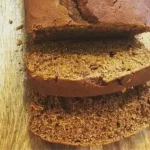
Gingerbread
- Author: Recipe Step
- Total Time: 1 hour
- Yield: 16 squares 1x
- Diet: Vegetarian
Description
Warm, spiced, and delightful gingerbread squares that embody the festive spirit
Ingredients
- 2 1/2 cups all-purpose flour
- 2 tsp ground ginger
- 1 1/2 tsp ground cinnamon
- 1/2 tsp ground cloves
- 1/2 tsp ground nutmeg
- 1/2 tsp baking soda
- 1/2 tsp salt
- 1/2 cup unsalted butter, softened
- 1/2 cup granulated sugar
- 1/2 cup brown sugar, packed
- 2 large eggs
- 1 cup molasses
- 1 cup hot water
- 1 tsp pure vanilla extract
Instructions
Preheat the Oven 🌡️:
- Preheat your oven to 350°F (175°C).
- Grease and flour a 9×9-inch baking pan or line it with parchment paper.
Sift Dry Ingredients 🧁:
- In a medium-sized mixing bowl, sift together the all-purpose flour, ground ginger, ground cinnamon, ground cloves, ground nutmeg, baking soda, and salt. Set this dry mixture aside.
Cream the Butter and Sugars 🍰:
- In a separate large mixing bowl, cream together the softened butter, granulated sugar, and brown sugar until the mixture is light and fluffy.
Add Eggs and Molasses 🥚:
- Beat in the eggs, one at a time, and then mix in the molasses until well combined.
Combine Wet and Dry Ingredients 🥄:
- Gradually add the dry ingredient mixture to the wet ingredients, mixing until just combined.
Add Hot Water and Vanilla ☕:
- Pour in the hot water and add the vanilla extract, then stir until the batter is smooth.
Bake 🎂:
- Pour the gingerbread batter into the prepared baking pan.
- Bake in the preheated oven for approximately 40-45 minutes, or until a toothpick inserted into the center comes out clean.
Cool 🌬️:
- Allow the gingerbread to cool in the pan for about 10 minutes before transferring it to a wire rack to cool completely.
Slice and Serve 🍰:
- Once cooled, slice your gingerbread into squares or rectangles and serve.
- You can dust the top with powdered sugar or serve it with a dollop of whipped cream or a scoop of vanilla ice cream if you like. Enjoy! 🎉
Notes
Serve dusted with powdered sugar, whipped cream, or vanilla ice cream.
- Prep Time: 15 minutes
- Cook Time: 45 minutes
- Category: Dessert
- Method: Baking
- Cuisine: American
Nutrition
- Calories: 250
- Sodium: 200mg
- Fat: 8g
- Carbohydrates: 40g
- Protein: 3g
- Cholesterol: 45mg


